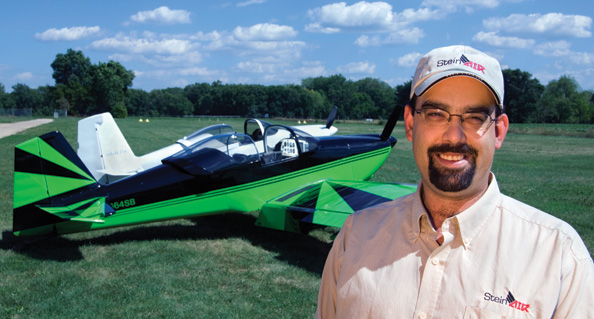
Compare autopilot capabilities for your Experimental/Amateur-Built aircraft with whats available for the guy down the hangar row and his Wunderbar 200. He wants a new autopilot because his Creaky IV was installed when men wore plaid pants and ties big enough to be a lobster bib. Its not so much on the job as helping with weight and balance. To put in even a rudimentary rate-based, two-axis autopilot costs nearly $15,000. Will it fly a GPS approach? No. Will it track a GPS navigation with GPSS (GPS Steering)? Not on your life!
Enough picking on the certified guys. In 2010, the autopilot business where homebuilders is concerned is as vital as ever, despite some defections. Blue Mountain Avionics and Navaid Devices have left the building, and because the demand for certified autopilots from Century and S-Tec can be rounded down to zero (so we will omit coverage this month), its easier to concentrate on the power players.
Before we get to the individual companies, an observation on trends. As we saw when looking at EFISes (electronic flight instrument systems) last month, the industry is maturing, and the competent, consistent firms-those with solid products, ongoing development, useful factory support-have blossomed. TruTrak is as much a dominant force as ever, but Trio has introduced new products to go with its well regarded current offerings. Dynon and MGL continue to work toward totally integrated solutions, which in Dynons case includes inventing and developing its own servos.
One Box or Two?
There is an interesting philosophical divide in autopilot design. Even as Experimental Georges evolved to become more capable, they retained a tried-and-true modular approach. You have your instruments here, and your autopilot there, and perhaps the only thing they have in common is a shared power bus and data lines providing course guidance or commands. The idea is to let the autopilot components literally handle the airplane independently from the EFIS or other instruments. This concept preserves redundancy-the modern autopilot will revert to more basic modes if the EFIS commanding it suffers a failure-at the cost of more components, additional weight and some wiring complexity. Plus, your two-axis autopilot controller will need to be plumbed into the pitot/static system.
Integration is a fact of life in automobile circles-when was the last time you changed your own stereo?-and it has crept into aircraft. EFIS manufacturers have followed this idea to its logical conclusion, which says that if you’re already determining the aircrafts heading, attitude, altitude and speed, why duplicate efforts in an external box? The EFIS knows all, so why not let it control the servos directly? This is the position that Dynon and MGL take, and their systems integrate servos (the muscle) directly with the EFIS (the brain). Of course, you sacrifice redundancy. If the EFIS controlling the servos goes crazy, the autopilot wont work.
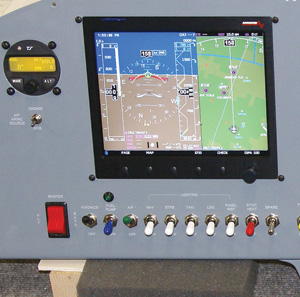
Advanced Flights Advanced Pilot autopilot is mated to an AF-3500 EFIS.
There is no one true path here. Modern avionics are reliable (when installed properly), but some pilots will only feel comfortable with the belt-and-suspenders approach.
How about a closer look at the major offerings in Experimental autopilots?
Advanced Flight Systems
Advanced Flights Advanced Pilot, is a reprogrammed TruTrak Digiflight II VSGV. The reprogramming part is the addition of a serial output from the autopilot back to the EFIS. On this data stream comes confirmation of the autopilots modes as well as trim prompting.
Actually, there’s a bit more to it. The two buttons on the front of the autopilot head are different. Before, you had MODE and ALT buttons. MODE changed the lateral commands and the ALT button toggled among vertical-speed select, altitude hold and GPSV. The problem was that to get to the GPSV mode required going through altitude-hold, which in turn caused the autopilot to try leveling off before accepting and responding to the GPSV commands.

Advanced Flight Systems Pilot (the blue screen is new) in flat pack form.
With the Advanced Pilot (and the similar Garmin GX Pilot), the buttons say AP and EFIS. Push the AP button, and the autopilot comes up in track-hold mode and synchs to the vertical action at the time of engagement, either altitude-hold or vertical speed. Pushing the EFIS button brings the autopilot up in simultaneous GPSS and GPSV modes, so its ready to follow the EFISs commands right away. Much cleaner and simpler.
The Advanced Pilot will work in several modes. It can follow heading commands through a bug on the EFIS, come up in an armed mode-that is, it will hold the bugged heading but watch as the CDI (course deviation indicator) centers, and then switch to NAV mode-or follow the nav mode initially. In the vertical realm, the Advanced Pilot will hold a predetermined altitude, as well as climb or descend to a desired altitude by holding airspeed or vertical speed.
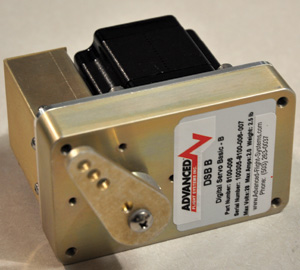
Advanced Flight Systems servo.
Approach modes include full precision and nonprecision GPS approaches plus ILS/VOR/LOC approaches from any nav/com that outputs this information on a digital stream. (That is, the AFS wont connect to analog inputs from, say, an old Bendix/King KX-155.)
The Advanced Pilot works with any of the company’s current EFISes when fitted with the optional ARINC module ($500). Its available in the circular, 2.25-inch format or the flat pack configuration.
Stein says: At the core of the Advanced autopilot sits a TruTrak manufactured unit-and thats a good thing for ease of installation and support. Many shops and just as many builders will be familiar with TruTraks wares, and the variety of installation kits helps a lot. Little tweaking is required to make this autopilot perform.
Dynon Avionics
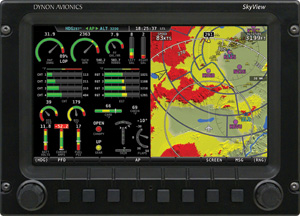
Dynons autopilot functions will be solely controlled from the SkyView. Note the mode annunciation at the top, left edge of the screen.
Rather than go with another manufacturers controller or servos, Dynon built its own autopilot from the ground up. Naturally, the Dynon autopilot works only with Dynon EFISes. As a result, the total cost can vary greatly depending upon what you’re starting with. For example, a base system (one axis) using an EFIS-D10A plus a single servo is $2950. Servos, $750 each regardless of pitch or roll, are available as the more common lever-arm models as well as a capstan version for cable-controlled aircraft. These servos are literally networked into the system using a proprietary two-wire configuration.

Dynon SV32 autopilot servo.
In the legacy EFIS products (D10A, D100, D180), the autopilot must be controlled through soft keys on the instrument itself. Dynon appreciated that this is not the ideal way to manage George, so the AP74 dedicated autopilot control box was created. It costs $450 and provides a main on/off control that doubles as an emergency, 180 turn command when held down, a Value knob (whose function varies), and buttons for HDG (heading hold), TRK (track hold), NAV (nav capture) and ALT (altitude hold). The Dynon system will track both RS-232-supplied GPS lateral data as well as VOR/LOC signals from the Garmin SL30 nav/com. When you purchase the HS34 navigation module ($650), which includes an ARINC 429 converter, the autopilot will follow GPSS lateral guidance from most GPS navigators as well as the VOR/LOC information from the Garmin 430/530 boxes.

The AP74s vertical or horizontal orientation adds flexibility to panel planning.
Currently, the Dynon autopilots cannot follow vertical guidance sent by either the SL30 or the Garmin 430/530 boxes, though thats on the wish list for the SkyView system. A module that would have allowed more sophisticated functions in the legacy EFISes has been shelved for some time. Also, at the moment, Dynon will not allow its EFISes to send data to outside autopilots, certainly a strategic rather than a technical move. (Although, when asked, a company representative indicated that sending such signals is not out of the question in the future, just that Dynon is focusing on developing the SkyView first.)
Development has improved the product. A recent software update provided new methods for calculating turn rates and improving performance overall. And an update just released as this is written has added some new features and improved pitch performance with the SkyView-based systems.

Garmins GX Pilot annunciates modes on the G3X PFD. In the line above the attitude indicator, you can see AP in green, meaning the autopilot is on. Its following a GPS nav source and is climbing in pitch-hold (PIT) mode. ALTS in white means that the altitude-capture mode is armed.
Stein says: The physical installation of the Dynon autopilot is a fairly painless process. The Dynon servos do not have a connector on them, so additional work will be required of builders to splice into the bare wires or to install their own connector. Also, many builders have had to do a fair amount of configuring of various parameters to dial in the autopilot, but once it is dialed in, it seems to perform well.
Garmin
Much of what we’ve said about the Advanced Pilot applies to the Garmin GX Pilot because the essential autopilot system is the same. Based off of the Digiflight II VSGV, the GX Pilot is a two-axis system capable of reading and following ARINC data streams, and can operate independent of the EFIS.
In connection with the G3X EFIS, the GX Pilot operates somewhat differently than the Advanced Pilot. For example, Advanced expects you to trigger the autopilot from the control head or the control-wheel-steering button. Garmin allows soft keys on the G3X primary flight display (PFD) to engage and manage the autopilot.

Garmin GX Pilot.
As we mentioned last month (Double the Pleasure, KITPLANES September 2010, Page 40), the GX Pilot has a few modes that the AFS doesn’t, including pitch-angle hold. It tightly integrates with the navigation functions of the G3X, though the one item still in the works is coupled navigation from VOR/ILS/LOC nav sources; currently, the GX Pilot can only couple to GPS-derived courses. In use, the GX Pilot can follow heading, nav source lateral guidance, or can simply be asked to keep the wings level. In pitch, the GX Pilot will follow the bug on the G3X, hold pitch attitude, or climb and descend at a prescribed vertical speed to bug capture; it can also follow GPS approaches that include vertical guidance.
Adding a GX Pilot is a $5200 affair plus mounting kits, which are the same as for other TruTrak systems, meaning there are a lot of them for a variety of different airplanes. Round or flat pack versions are available.
Stein says: Everything credited to the TruTrak systems applies here, because thats what the GX Pilot basically is.
Grand Rapids Technologies
A note about Grand Rapids Technologies. The guys at GRT tend to feel a bit left out when we discuss autopilots and integration even though, technically, they don’t make their own autopilot. Instead, all the GRT Horizon and Sport units integrate well with autopilots capable of accepting an ARINC 429 data stream. Although this is a one-way street-the GRT systems don’t know what the autopilot is actually doing-the avenue is long and wide. GRT has the ability to synthesize data that the autopilot sees as steering commands. In so doing, the GRT boxes can command the autopilot to fly the expected GPS-based approaches (both nonprecision and LPV [localizer performance] precision type) in addition to following analog signals.

The Grand Rapids Horizon EFIS kicks out a torrent of data for TruTrak and Trio autopilots to follow. So what if it doesn’t say GRT on the control head?
For example, the GRT takes the serial data from a Garmin 430 or 530 including the VOR, ILS and localizer signals. The EFIS then determines what steering commands the autopilot needs to stay on course, laterally and vertically. The feature allows the GRT units to command the autopilot to fly charted approaches as well as internally synthesized approaches to any runway end in the database. Finally, the Horizon EFIS can accept analog deviation signals from purely analog radios and convert them into course-deviation indications on the screen, from which it can then synthesize autopilot commands.
In many ways, GRT has been out ahead of the curve on numerous features, and the Horizon series in particular sends out a solid, sophisticated data stream that ARINC-capable autopilots can follow.
Stein says: GRT was the first company we know of to create a really good interface to existing autopilots. The Horizon/Sports interface to both the TruTrak and Trio autopilots is among the best out there, and has been proven for many years. Install a mid to upper range Trio/TruTrak coupled with a GRT EFIS (and appropriate radio/GPS), and you’ll have a complete and interfaced system that will fly approaches and allow for control from the EFIS. Support from GRT is also historically very good.
MGL Avionics
Following the same concept as Dynon, MGL offers internal control through its several EFIS models of popular autopilot servos. At this time, MGL supports the Trio Gold Standard servo as well as the Navaid Devices servo. Whats more, the company is developing its own line of servos right now.

MGL supports the Trio Gold Standard servo (shown here). But the company is also developing its own line of servos.
As currently configured, the MGL autopilot system will hold heading (actually, GPS track), follow a GPS nav flight plan, climb or descend to the altitude bug and/or hold current vertical speed. The functions are determined by presets, but individual pushbuttons can be set up to trigger various modes. When configured with an ARINC module, the MGL system will capture and follow GPSS and GPSV signals, as well as VOR/ILS/LOC signals from a Garmin 430/530 navigator. In essence, the MGL autopilot will follow whatever the system can display on the EFISs horizontal situation indicator (HSI).
Each servo in the MGL system costs $750, plus you must add a COM extender module for $205; it connects to the EFIS through a serial port and provides the network connections for the servos. Wiring harnesses are available for $50 each axis.
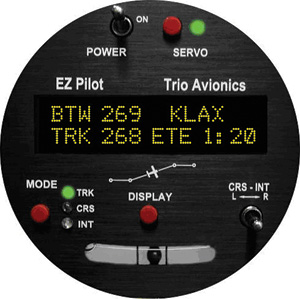
Trio EZ Pilot.
Stein says: At the moment MGL is working on the software for the autopilot to increase its functionality and usability along with the creation and sale of its own servos. There are not enough units in the field to draw solid conclusions about installation, setup and performance. No doubt the system carries a lot of potential, but its still in the early days.
Trio Avionics
Quietly going about its business, San Diego, California-based Trio Avionics has continued to expand and develop its autopilot line. The company produced three primary products, the Pro Pilot, the EZ Pilot and an altitude-control module. The EZ Pilot has been the company’s bread-and-butter offering. This single-axis system, using an instrument hole (3.125-inch) mount, is intended to replace the turn coordinator in a conventional panel. (Thats why it has a slip-skid indicator, the ball, and an internal rate-of-turn indicator.) The $1770 EZ Pilot holds a course over ground or follows a GPS nav track.

Left: Trio altitude control face. Right: Trio Pro Pilot rack mount.

Trio Pro Pilot GPSS GPSV.
Three versions of the company’s pitch-axis autopilot are available. One simply holds altitude-though it comes with trim sensing and annunciation-plus another that will maintain a set vertical speed as well as hold altitude, and one more that includes altitude preselect and capture. They start at $1795 and run upward to $2395.
Taking these concepts further is the Pro Pilot, Trios do-it-all, integrated system. Also fitting into a 3.125-inch instrument hole, the Pro Pilot includes advanced GPS nav tracking including GPSS and GPSV. It will hold altitude, fly a set vertical speed and fly to and capture a preset altitude. The basic Pro Pilot starts at $3995, with the GPSS option taking it to $4295 and the GPSS/GPSV combo bringing the total price to $4795, undercutting the similarly featured TruTrak Digiflight II VSGV by $400. (Technically, the Pro Pilot has a couple of features not on the VSGV, including altitude intercept.)
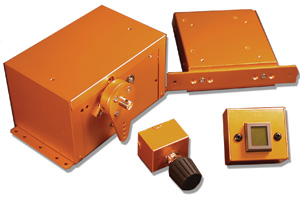
Trio altitude hold system and servo.
A word about servos: Trio designed and built what it calls Gold Standard servos. They are light and powerful, and feature fully disengaging clutches so that they don’t add any control friction when the autopilot is not in use. At this time, Trio has only lever-arm servos. Installation kits are available for the RV-7 through RV-10.
Stein says: Trio Avionics autopilots are well proven with rock solid history and reliability. Installation is relatively easy, and setup is pretty much put it in, turn it on and go fly. Support from the company is top notch, and continuing product development is done methodically with lots of testing in the company’s own planes before anything is released to customers. This is a sign of a mature company with mature products.
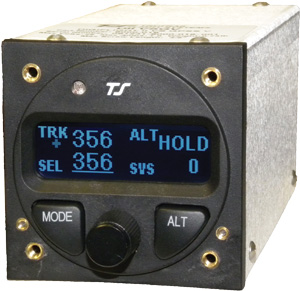
TruTrak Digiflight VSGV.
TruTrak Flight Systems
TruTraks products are created by a man (Jim Younkin) who probably has more experience with autopilot design and development than Old Man Sperry himself. TruTrak used to have an almost head-spinning variety of autopilots, but has recently trimmed the lineup.
At the top is the Sorcerer, a truly full-function standalone autopilot that can accept analog and digital signals and turn them into navigation sources. The Sorcerer will perform fully coupled ILS/LOC/VOR approaches without any external help from an EFIS. It will also fly GPS approaches of all types. The $8000 charged for the two-axis system buys tremendous capabilities and an unmatched set of connectivity conveniences. The Sorcerer is available in radio-stack or ATI formats. (ATI is the 3.125-inch, semi-square format.)
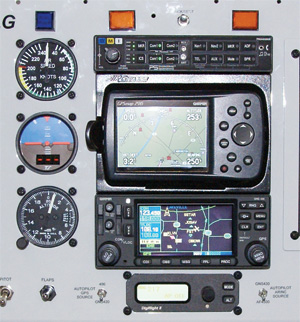
TruTraks flat pack autopilot heads are narrower than radio-rack versions and may fit where a round head wont.
At the other end of the spectrum are the Digitrak and Altrak systems, independent, basic autopilots. The Digitrak is a roll-axis autopilot that can follow a specified track or simple GPS navigation. The Altrak adds altitude hold only; the Altrak VS can hold altitude or a selected vertical speed. The $4000 ADI Pilot II combines an attitude direction indicator instrument (an artificial horizon with a vertical-speed readout instead of a pure pitch-angle bar) and a two-axis autopilot. The ADI Pilot II will hold heading or follow a GPS track, and hold altitude when commanded.
The midrange, and most popular, offerings from TruTrak are the Digiflight II designs, which have been revised and reduced in number. Now there are two, the Digiflight II VS and the VSGV. The VS is a two-axis system capable of heading hold and simple GPS Nav mode (from an RS-232 source; it doesn’t support ARINC 429 inputs), plus altitude hold and climb/descent to a specified vertical speed. It runs $4000. The next step up is the VSGV, which forms the basis for the Advanced Pilot and the Garmin GX Pilot. To the VSs capabilities, it adds support for ARINC 429 inputs, meaning it is able to fly GPSS and GPSV commands. $5200 buys the VSGV in either 2.25-inch form or a flat pack. And lets not forget that TruTrak has a built-in autopilot option for its EFIS (a $2000 upcharge over the basic EFIS) and will be producing autopilot-enabled versions of its Gemini LCD instruments this year.
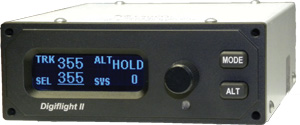
TruTrak Digiflight II.
Stein says: Having many units in the field over many decades, in many aircraft gives TruTrak a head start that its competitors struggle to close. TruTrak has managed to have systems that work very well right out of the box, but also have sufficient setup options to accommodate airframe or installation anomalies. Support from TruTrak is also top notch.

TruTrak Digitrak and Sorcerer.
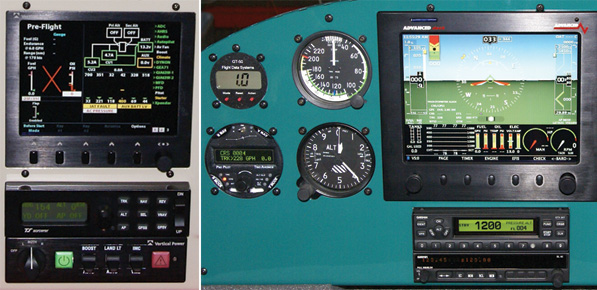
Left: TruTraks Sorcerer (the middle box in the stack) is a full-featured autopilot capable of reading and flying signals for digital and analog sources. Right: While Advanced Flight has its own autopilot, the company’s EFISes will output full data streams to other autopilots, such as this Trio Pro Pilot.











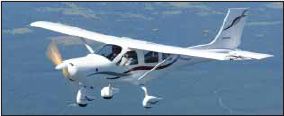
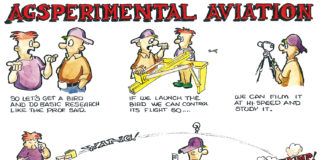
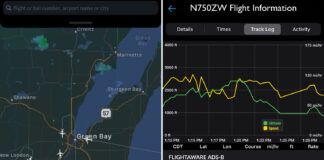
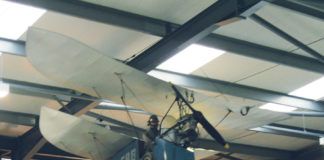
Hi Stein,
I am writing to you from France.
No one here is capable of repairing a Digiflight II autopilot.
Mine is defective on the GPS connected to the Garmin 296.
Altitude is OK
Can you find a used Digiflight II autopilot in the United States?
Sincerely
Thibault